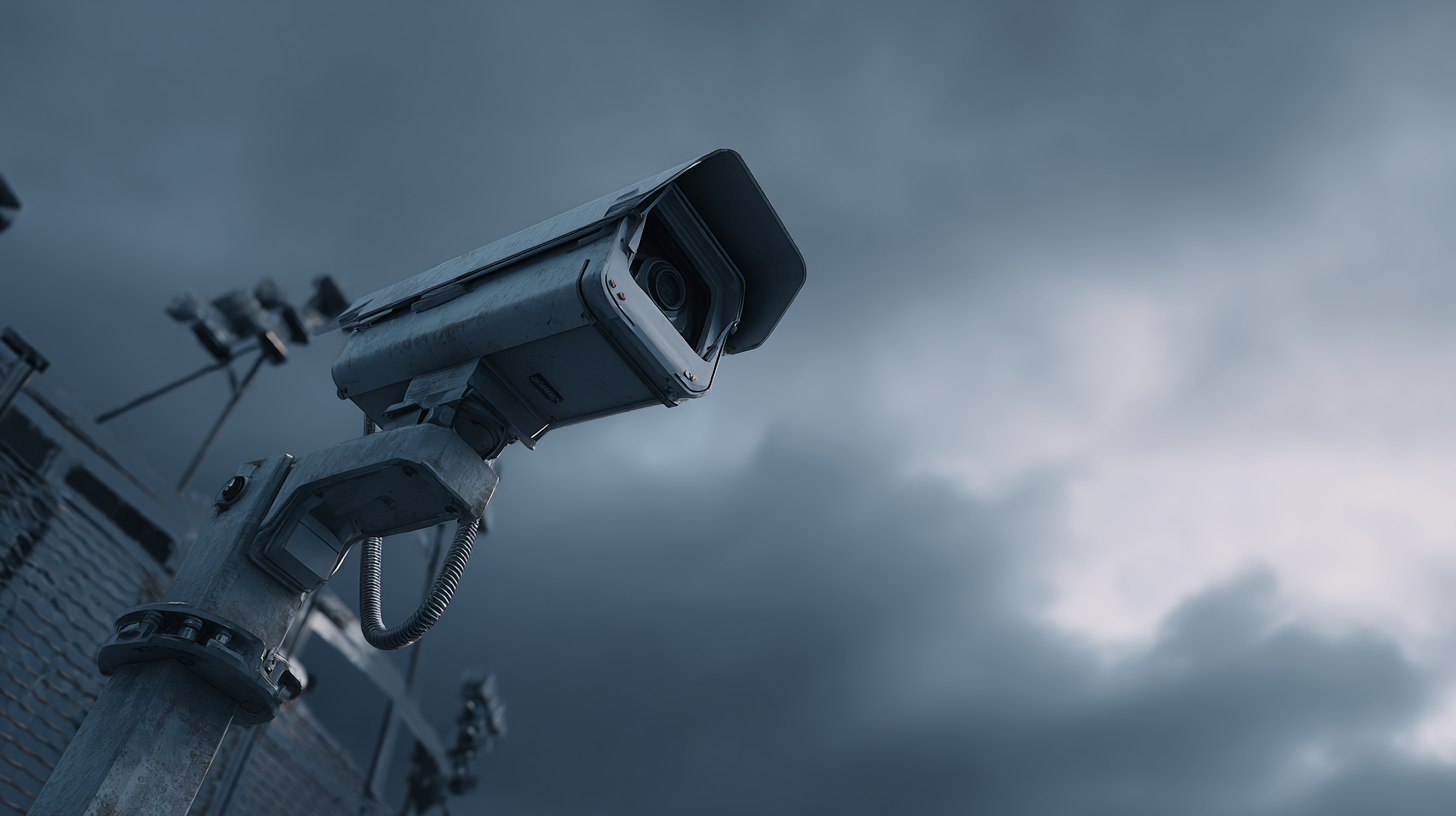Leave Your Message
-
Phone
-
E-mail
-
Whatsapp
In the ever-evolving landscape of modern surveillance systems, the quest for enhanced signal clarity is more crucial than ever. One of the pivotal elements that contributes to this clarity is the implementation of Radar Filters. These advanced filtering techniques serve to eliminate unwanted noise and interference, allowing for more accurate detection and identification of targets. As surveillance technology continues to advance, the role of Radar Filters becomes increasingly significant, providing operators with the ability to interpret radar data with greater precision. This exploration delves into the mechanisms and benefits of Radar Filters, shedding light on how they transform the functionality of contemporary radar systems and improve overall surveillance effectiveness. By understanding the impact of these filters, we can appreciate their essential role in enhancing the capabilities of modern security and monitoring solutions.

 In modern surveillance systems, the significance of radar filters cannot be overstated, especially when it comes to enhancing the signal-to-noise ratio (SNR). High SNR is critical for accurately identifying targets against a backdrop of environmental and electronic noise. Research has shown that advanced radar filters can improve SNR by as much as 30%, leading to better target detection and tracking capabilities. According to a report from the International Radar Conference, implementing sophisticated filtering techniques in radar systems has resulted in a notable reduction in false alarms, which directly enhances operational efficiency.
In modern surveillance systems, the significance of radar filters cannot be overstated, especially when it comes to enhancing the signal-to-noise ratio (SNR). High SNR is critical for accurately identifying targets against a backdrop of environmental and electronic noise. Research has shown that advanced radar filters can improve SNR by as much as 30%, leading to better target detection and tracking capabilities. According to a report from the International Radar Conference, implementing sophisticated filtering techniques in radar systems has resulted in a notable reduction in false alarms, which directly enhances operational efficiency.
To optimize the benefits of radar filters, it’s essential to consider the type of noise present in the environment. For instance, ground clutter can significantly impact signal clarity. One valuable tip is to employ adaptive filtering techniques that adjust in real-time to changes in noise characteristics. By doing so, surveillance systems can maintain high performance in varying operational conditions.
Additionally, regular calibration of radar systems is crucial. Ensuring that filters are properly tuned can help maintain an optimal SNR, even in challenging environments. Investing in training for operators on the capabilities and limitations of radar filters can also enhance overall system performance, enabling them to make informed decisions swiftly.
 Modern radar filters have become an essential component in enhancing signal clarity and improving detection accuracy in surveillance systems. According to a report from MarketsandMarkets, the global radar filter market is projected to reach $1.28 billion by 2024, driven by the increasing demand for high-resolution detection in various industries, including defense and aviation.
Tip: When selecting radar filters, consider the specific application requirements, such as the required bandwidth and environmental conditions, to ensure optimal performance.
Key technical specifications of these radar filters, such as bandwidth, noise figure, and temperature stability, play a crucial role in mitigating unwanted signals and improving the overall performance of radar systems. By optimizing these parameters, surveillance systems can achieve a significant reduction in false positives, with some studies indicating improvements of over 25% in detection accuracy.
Tip: Regularly updating the software and firmware of radar systems can enhance filter performance and keep the detection algorithms aligned with the latest technological advancements.
Furthermore, advancements in materials and design techniques have led to the development of adaptive filters that can dynamically adjust to changing signal environments. This adaptability is particularly beneficial in urban settings where multipath signals can distort detection capabilities. The latest studies highlight that modern radar systems equipped with these sophisticated filters can detect threats up to 50% more effectively compared to older models.
Modern radar filters have become an essential component in enhancing signal clarity and improving detection accuracy in surveillance systems. According to a report from MarketsandMarkets, the global radar filter market is projected to reach $1.28 billion by 2024, driven by the increasing demand for high-resolution detection in various industries, including defense and aviation.
Tip: When selecting radar filters, consider the specific application requirements, such as the required bandwidth and environmental conditions, to ensure optimal performance.
Key technical specifications of these radar filters, such as bandwidth, noise figure, and temperature stability, play a crucial role in mitigating unwanted signals and improving the overall performance of radar systems. By optimizing these parameters, surveillance systems can achieve a significant reduction in false positives, with some studies indicating improvements of over 25% in detection accuracy.
Tip: Regularly updating the software and firmware of radar systems can enhance filter performance and keep the detection algorithms aligned with the latest technological advancements.
Furthermore, advancements in materials and design techniques have led to the development of adaptive filters that can dynamically adjust to changing signal environments. This adaptability is particularly beneficial in urban settings where multipath signals can distort detection capabilities. The latest studies highlight that modern radar systems equipped with these sophisticated filters can detect threats up to 50% more effectively compared to older models.
As surveillance technology rapidly advances, the adoption of advanced radar filtering techniques is becoming increasingly critical in security applications. The shift towards sophisticated filtering methods is driven by the need to enhance signal clarity and reduce noise, which is vital in environments where precise detection is paramount. Industry trends show a significant upward trajectory in the global sensor fusion market, expected to expand from $8.0 billion in 2023 to an impressive $18.0 billion by 2028. This growth is indicative of a growing recognition among security professionals of the importance of integrated systems that leverage radar data to improve situational awareness.
In parallel, the anti-drone market is set to see remarkable growth, with projections indicating an increase from USD 4.48 billion in 2025 to USD 14.51 billion by 2030, marking a compound annual growth rate of 26.5%. This surge highlights the urgent need for effective surveillance tools capable of addressing emerging threats. The integration of advanced radar filters not only enhances detection capabilities but also supports the broader application of security measures across various platforms, thereby optimizing responses to potential security breaches. As the industry embraces these innovative technologies, the impact of radar filtering on modern surveillance systems will undoubtedly shape the future landscape of security applications.
Radar filters play a crucial role in modern surveillance systems,
substantially enhancing signal clarity and target detection capabilities. A comparative analysis of various radar filter technologies,
such as adaptive filtering, wavelet transforms, and k-domain filtering, reveals significant
differences in their effectiveness across real-world scenarios. For instance, a recent report by the
Institute of Electrical and Electronics Engineers (IEEE) highlights that
adaptive filtering can reduce false alarm rates by up to 35% when employed in urban environments,
where interference is prevalent. This technology's ability to distinguish between genuine targets and clutter enables operators to make
more informed decisions.
Moreover, the implementation of wavelet transform techniques has shown promising results in maritime surveillance applications.
According to a study published in the Journal of Navigation, wavelet filters can enhance
target detection performance by approximately 40% during challenging weather
conditions compared to traditional filtering methods. This capability is critical for coast guard operations, where the need for
reliable detection in adverse conditions can mean the difference between safety and potential disaster. Evaluating the effectiveness
of these advanced radar filter technologies not only informs best practices in system design but also optimizes resource allocation
in surveillance operations across various domains.
In the realm of modern surveillance systems, innovative radar filtering solutions have proven to be game-changers. Case studies highlight how organizations have successfully integrated advanced filtering technologies to enhance the clarity and accuracy of radar signals. For instance, a metropolitan police department implemented a sophisticated radar filter that significantly reduced false positives during surveillance operations. This not only improved overall response times but also allowed for better resource allocation during critical events.
Tip: When considering radar filters, assess the specific needs of your surveillance system. Tailoring the filtering approach to the operational environment can dramatically elevate performance.
Another success story comes from maritime security, where a coastal surveillance authority adopted high-frequency radar filters. This innovation enabled clearer differentiation between maritime vessels and environmental noise, leading to improved tracking and identification capabilities. As a result, the authority was able to prevent illegal fishing activities and enhance overall security in busy shipping lanes.
Tip: Regularly update and calibrate your radar filtering systems to adapt to changing environmental conditions, ensuring optimal performance over time.
| Case Study | Radar Filter Type | Application Area | Improvement in Signal Clarity (%) | Additional Benefits |
|---|---|---|---|---|
| Urban Traffic Monitoring | Adaptive Noise Cancellation | Traffic Management | 85% | Reduced false alarms, improved incident detection |
| Coastal Surveillance | Pulse-Doppler Filtering | Maritime Security | 90% | Enhanced tracking of small vessels, reduced clutter |
| Wildlife Protection | Spatial Filtering | Conservation Areas | 75% | Minimized interference from vegetation, better animal tracking |
| Air Traffic Control | Kalman Filtering | Aviation | 95% | Increased aircraft detection rate, enhanced safety |
